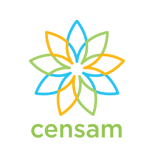 |
|||||||||||||||||||||||||
|
|||||||||||||||||||||||||
|
|
Center for Environmental Sensing and Modeling (CENSAM) IRGLead PI: Professor Andrew Whittle
RESEARCH AREAS AND PROJECTSA. Built and Natural EnvironmentInteractions Between The Built and Natural EnvironmentConduct measurements and develop models of flows of energy between the built and natural environments. Measure and model sky luminance and radiance. Quantify the influence of Singapore residential forms on the local thermal environment (urban heat island). Urban Airshed Measurements And Modelling Measure and model airflows in the urban canopy layer. Develop MEMS-based airflow sensors for use with conventional sensors to monitor outdoor airflows in urban canyons and housing developments. Develop a model with a selected set of computational fluid dynamics programmes and simpler parameterised methods. B. Urban Hydrology And Water ResourcesEnvironmental Impacts of Regional Land Use ChangeDesign and install instrumented meteorological towers to measure the vertical flux density of carbon dioxide and water vapour above the forest canopy. When coupled with measurements of drainage and subsurface flows, these stations will provide control volume data for interpreting effects of land use change (deforestation etc) on local climatic conditions. Wireless Sensor Networks For Monitoring Water Systems Develop wireless sensor network capabilities to enable high date rate, real time monitoring of a large urban water distribution system. Assimilate real time measurements into hydraulic models to improve state estimation. Monitor hydraulic and water quality parameters enabling remote detection of leaks and real-time tracking of contamination events. Near Source Contaminant Transport C. Coastal EnvironmentCoastal Environment and Sediment Transport (CEST)Develop small scale process models for sediment transport in the coastal environment. Verify these models through laboratory experimentation in facilities designed and built in Singapore. Develop linkages to properly account for and incorporate small scale processes in larger, systems level models. D. Underwater and Marine SensingChemical Sensors For AUVsDevelop Chemical sensors for Autonomous Underwater Vehicles (AUV). Using mass spectrometry to detect low molecular weight hydrocarbons and volatile organic compounds to monitor pollution. Using laser-induced fluorescence to identify higher-molecular-weight hydrocarbons and to detect older oil spills and biological entities such as chlorophyll. Underwater Optics Develop high-speed holographic particle image velocimetry instruments to acquire 3D flow data from the motion of AUVs, optical instruments such as spectrometers for use inside AUVs; and theoretically and experimentally investigate improving visibility for optical imaging in the turbulent waters of the Singapore port. Map-Based Navigation For Autonomous Marine Systems Monitor and survey the Singapore Harbor area, using autonomous surface and underwater vehicles. Develop a system capable of individual and coordinated actions relative to feature maps, and adaptive sampling. Incorporate new acoustic communication and navigation systems. Explore broader ultrasonic propulsion. MEMS Pressure Arrays For Near-Field Flow Patterns Develop MEMS sensors and processing software that emulate and extend the capabilities of the lateral line in fish. Detect near-field flow patterns and near- and far-body obstacles and vehicles. Enable navigation in shallow-water and/or cluttered environments, and flow control in conventional and biomimetic vehicles. Adaptive Sampling In Coastal Zone Environment Develop and test algorithms for planning cooperative adaptive sampling of the coastal zone ocean environment. Assimilate data from sensors on multiple autonomous vehicles on buoys and on bottom mounted instruments. Create geometric models of underwater solid features using these sensors. E. Integrated Environmental ModelsHydrologic Modeling And Data AssimilationDevelop urban canyon simulations and experiments to evaluate the effects of land use and building waste heat on the urban boundary layer. Implement a hydrologic model coupling surface runoff with a regional groundwater model to simulate tracer transport. Assimilate data with an atmospheric model estimating wind stresses at the surface of the South China Sea. Coupled Atmosphere-Biosphere Modeling Develop and test a regional atmosphere-biosphere model centered on Singapore. Enable better understanding of the climate around Singapore, the sensitivity to physical characteristics of islands and oceans, and predict how related processes such as global warming and deforestation affect the regional climate. Ocean Modeling And Data Assimilation Using the Finite Volume Coastal Ocean Model (FVCOM) simulate ocean circulation and property distributions. Validate with altimetric data and current velocity observations. Optimize design of observational arrays in the Singapore domain . Enable real time assimilation and forecasting capabilities for the Singapore region. Cyber-Infrastructure For CENSAM Develop a general data archive for multiple CENSAM research projects including both sensor and model generated data. Associate datasets with appropriate geospatial, sensor, accuracy, and access control metadata to optimize the data's utility, security, and longevity for present and future researchers.
|
|
|||||||||||||||||||||||
|
|||||||||||||||||||||||||


